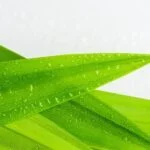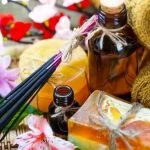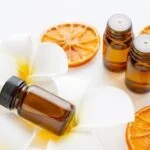Aromatherapy has long been known for its healing and therapeutic properties. The use of essential oils in aromatherapy has gained popularity, offering a natural and holistic approach to improving well-being. One popular way to enjoy the benefits of aromatherapy is through the use of aromatherapy sprays. In this article, we will explore what exactly aromatherapy spray is and how you can make your own at home.
Aromatherapy spray is a simple and convenient way to bring the benefits of essential oils into your everyday life. It is a liquid blend of water and essential oils that can be sprayed into the air or onto surfaces. When used correctly, aromatherapy sprays can promote relaxation, uplift mood, improve focus, boost energy levels, and even enhance sleep quality.
The benefits of using aromatherapy sprays are numerous. Not only do they offer a pleasant scent, but they also have the potential to positively impact our physical and emotional well-being. Inhalation of these sprays allows the particles from essential oils to enter our bloodstream through our lungs, where they interact with our body’s chemistry. This interaction can help reduce stress, relieve anxiety, ease headaches, soothe respiratory issues, and provide overall support for a healthier mind-body connection.
In the following sections of this article, we will delve deeper into understanding the basics of essential oils and their therapeutic properties. We will also guide you on selecting the right essential oils for your own customized aromatherapy spray and provide step-by-step instructions on how to create one. So let’s get started on creating your very own aromatherapy spray to enhance your well-being naturally.
Understanding the Basics
Essential oils are the foundation of aromatherapy spray, providing not only fragrance but also therapeutic benefits. Understanding the basics of essential oils and their therapeutic properties is crucial for creating effective and personalized aromatherapy sprays.
Essential oils are highly concentrated plant extracts that capture the scent and beneficial properties of plants. These oils have been used for centuries in various cultures for their healing properties, promoting well-being in mind, body, and spirit. Each essential oil has its own unique composition, giving it specific therapeutic properties.
To select the right essential oils for your aromatherapy spray, it is essential to understand the therapeutic properties of different oils. Here are some common essential oils and their therapeutic properties:
- Lavender: Lavender oil is known for its calming and soothing effects. It can help relieve stress, anxiety, and promote relaxation.
- Peppermint: Peppermint oil is invigorating and energizing. It can help enhance focus and mental clarity while also relieving headaches and muscle tension.
- Eucalyptus: Eucalyptus oil has a refreshing aroma that can help clear congestion and improve respiratory health.
- Lemon: Lemon oil is uplifting and invigorating. It is known to improve mood, boost energy levels, and enhance mental alertness.
- Tea Tree: Tea tree oil has powerful antibacterial and antifungal properties, making it useful for treating skin conditions such as acne or fungal infections.
When selecting essential oils for your aromatherapy spray, consider the specific benefits you wish to achieve. Whether you want to create a relaxing blend for bedtime or an uplifting combination to boost your mood during the day, understanding the basics of essential oils’ therapeutic properties will guide you in selecting the right ones to achieve your desired effects.
- Lavender – calming
- Peppermint – invigorating
- Eucalyptus – refreshing
- Lemon – uplifting
- Tea Tree – antibacterial and antifungal properties
Once you have a better understanding of essential oils and their therapeutic properties, you can move on to the next section of creating your aromatherapy spray: gathering the essential materials and tools needed for making the spray.
Selecting the Right Essential Oils for Your Aromatherapy Spray
When creating your own aromatherapy spray, selecting the right essential oils is crucial in achieving the desired therapeutic effects. Each essential oil offers unique properties and benefits, so it is important to choose oils that complement one another and align with your specific needs. Here are some key factors to consider when selecting essential oils for your aromatherapy spray:
- Purpose: Determine the purpose of your aromatherapy spray. Are you looking to relax and unwind, uplift your mood, or clear your mind? Different essential oils have different effects on the body and mind, so it is important to select oils that align with your intended purpose.
- Scent Preferences: Consider the scents that you find most appealing and enjoyable. Aromatherapy sprays not only offer therapeutic benefits but also serve as air fresheners or personal fragrance sprays. Choose scents that you find calming, invigorating, or comforting.
- Compatibility: Some essential oils blend well together while others do not. It is important to select oils that are compatible with one another to create a harmonious and balanced blend in your spray. Research on blending guides or consult with an expert to ensure that you choose oils that work well together.
To help you get started, here are some popular essential oils and their therapeutic properties:
- Lavender: Known for its calming and relaxing effects, lavender essential oil helps reduce stress, anxiety, and promotes better sleep.
- Peppermint: With its refreshing scent, peppermint essential oil is invigorating and energizing. It can improve focus, ease headaches, relieve nausea, and soothe muscles.
- Eucalyptus: Known for its decongestant properties, eucalyptus essential oil can help relieve respiratory issues such as coughs and sinus congestion.
- Citrus Oils (such as lemon, orange, or grapefruit): These citrusy oils have uplifting effects that promote positivity, boost mood, and stimulate the senses.
Remember to always choose high-quality essential oils from reputable sources to ensure their purity and effectiveness. Experiment with different combinations of essential oils to create a unique and personalized aromatherapy spray that suits your needs and preferences.
Gathering the Essential Materials and Tools for Making Aromatherapy Spray
When it comes to making your own aromatherapy spray, it is important to have all the necessary materials and tools readily available before you begin. This section will guide you through the process of gathering everything you need to create your refreshing and therapeutic concoction.
Essential Materials
The first step in gathering materials for making aromatherapy spray is to find a suitable container. Look for a dark glass or PET plastic bottle with a spray nozzle that can hold the desired amount of liquid. It is recommended to use dark-colored containers to protect the essential oils from light exposure, which can degrade their therapeutic properties.
Next, you will need distilled water as the base for your spray. Distilled water is pure and free from contaminants that may affect the quality of your homemade aromatherapy spray. You can easily find distilled water at your local grocery store or pharmacy.
To ensure proper emulsion of the essential oils and water, you will also need an emulsifier. Witch hazel extract is commonly used as it helps bind oil and water together. Alternatively, you can use vodka or rubbing alcohol if witch hazel is not available.
Lastly, gather a few disposable pipettes or droppers for measuring and transferring essential oils accurately. These tools will help you control the amount of each oil added to your blend, ensuring a balanced fragrance and therapeutic effect.
Tools
In addition to the essential materials mentioned above, there are a few tools that will come in handy during the process of making aromatherapy spray.
You will need a measuring cup or a small glass beaker with clear markings to measure out the correct proportions of distilled water and emulsifier. This will ensure accuracy while mixing your ingredients.
Having a small funnel on hand can also be useful when pouring liquids into your chosen container without any spills or messes.
Lastly, don’t forget to prepare some labels and pens for tracking and identifying your different aromatherapy sprays. Labeling your creations will help you keep track of the ingredients used and allow for future customization.
By gathering these essential materials and tools, you are now one step closer to creating your own homemade aromatherapy spray. With everything at hand, you can proceed to follow the step-by-step guide in the next section to bring your aromatic creation to life.
Step-by-Step Guide
Making your own aromatherapy spray can be a fun and rewarding experience. Not only do you get to customize the scent and therapeutic properties of the spray, but you also have control over the ingredients used. In this section, we will provide a step-by-step guide on how to make your own aromatherapy spray.
Step 1: Gather your materials
Before you begin making your aromatherapy spray, make sure you have all the necessary materials and tools. You will need a spray bottle, preferably made of glass or PET plastic to preserve the integrity of the essential oils. Additionally, gather distilled water or hydrosol, witch hazel or vodka as a dispersing agent, and your chosen essential oils.
Step 2: Prepare the bottle
Thoroughly clean and dry your spray bottle before use. This will help prevent any contamination that may affect the quality of your aromatherapy spray. If using a new bottle, remove any stickers or labels from its surface.
Step 3: Measure and add ingredients
Start by adding 2 tablespoons of witch hazel or vodka into your spray bottle. This will act as a dispersing agent and help mix the oil with water. Next, add 10-20 drops of your chosen essential oils into the bottle. The number of drops depends on personal preference and desired strength of scent.
Step 4: Add water
Fill up the rest of the bottle with distilled water or hydrosol, leaving some space at the top for shaking. Make sure to leave enough room for inserting the spray nozzle without overflowing when it is screwed back on.
Step 5: Shake well
Securely put the spray nozzle back onto the bottle and shake vigorously for about half a minute. This will ensure that all ingredients are thoroughly mixed together.
With these five simple steps, you can easily create your own aromatherapy spray at home. Experiment with different combinations of essential oils to find the perfect scent and therapeutic effect that suits your needs. Whether you’re looking for a calming spray for relaxation or an invigorating spray to boost energy, making your own aromatherapy spray allows you to unleash your creativity and enhance your well-being naturally.
Customizing Your Aromatherapy Spray
Understanding the Power of Essential Oil Blends
One of the most exciting aspects of making your own aromatherapy spray is the ability to create unique blends of essential oils that cater to your specific needs and preferences. By combining different essential oils, you can enhance the therapeutic effects of your spray and target specific physical or emotional issues.
When it comes to blending essential oils, it’s important to understand that each oil has its own unique properties and benefits. Some oils may be soothing and calming, while others may be invigorating or uplifting. By selecting the right combination of oils, you can create a customized blend that promotes relaxation, boosts energy levels, reduces stress, or even relieves headaches.
Creating Your Own Unique Blend
To start customizing your aromatherapy spray, begin by determining what effect you want to achieve. Are you looking to create a relaxing spray for bedtime? Or perhaps an energizing spray for the morning? Once you have identified your desired effect, select essential oils that are known for their corresponding properties.
For example, if you want a refreshing and invigorating spray, consider using peppermint, lemon, and eucalyptus essential oils. On the other hand, if relaxation is your goal, lavender and chamomile are excellent choices. By experimenting with various combinations of essential oils, you can discover the perfect blend that suits your needs.
Experimenting with Ratios
Once you have chosen your essential oils for the desired effect, it’s important to consider the ratios at which they should be mixed. Start by adding fewer drops of stronger scents so as not to overpower the overall fragrance of your blend. For instance, if you’re using a strong-scented oil like lavender in combination with citrusy notes like orange or grapefruit, you may want to use fewer drops of lavender for a balanced aroma.
To blend your essential oils effectively, it’s recommended to use a carrier oil such as jojoba, almond, or coconut oil. Carrier oils not only dilute the essential oils but also help to disperse them evenly in the spray solution. Additionally, they provide moisturizing properties for your skin when applied.
By customizing your aromatherapy spray with carefully selected and blended essential oils, you can create a personalized scent that suits your preferences while reaping the therapeutic benefits. Experiment with different combinations and ratios until you find the perfect blend for desired effects.
Additional Tips and Tricks for Creating Perfect Aromatherapy Sprays
To create a perfect aromatherapy spray, there are several additional tips and tricks that you can follow. These suggestions will help you enhance the effectiveness and longevity of your homemade sprays:
- Dilution Ratios: It is important to properly dilute essential oils when making aromatherapy sprays. Most essential oils should be diluted in a carrier oil or liquid before adding them to the spray bottle. The general rule of thumb is to use a 2% dilution ratio, which means that for every 1 ounce (30 ml) of carrier liquid, add around 12-15 drops of essential oil.
- Quality of Ingredients: Using high-quality ingredients is key to creating a great aromatherapy spray. Choose pure and organic essential oils that are sourced from reputable brands or suppliers. Additionally, opt for carriers like distilled water or witch hazel that do not contain any additives or preservatives.
- Storage and Shelf Life: To ensure the longevity of your aromatherapy sprays, store them in dark glass containers such as amber or cobalt blue bottles. This will help protect the oils from light exposure, which can cause them to degrade over time. Keep your sprays away from direct sunlight and extreme temperatures to further extend their shelf life.
- Labeling: Properly labeling your homemade aromatherapy sprays is crucial for safety and convenience. Clearly indicate the name of the blend, its purpose or benefits, as well as any precautions or usage instructions on the bottle label. This will make it easier for you to identify and use your sprays correctly.
- Test Patch: Before using your homemade spray directly on your skin or in a confined space, it is advisable to perform a patch test first. Apply a small amount of the spray onto a small area of skin and wait for 24 hours to check for any negative reactions or sensitivities. This will ensure that the spray is safe for use and does not cause any adverse effects.
By following these additional tips and tricks, you can create perfect aromatherapy sprays that are personalized to your needs and preferences. Experiment with different essential oil blends, dilution ratios, and storage methods to find what works best for you. Enjoy the therapeutic benefits of your handmade sprays in various settings such as at home, in the office, or while traveling.
| Tips | Tricks |
|---|---|
| Properly dilute essential oils | Use high-quality ingredients |
| Store sprays in dark glass containers | Clearly label the bottles |
| Perform a patch test before using on skin | Experiment with different blends and storage methods |
Using and Storing Your Homemade Aromatherapy Spray
Once you have successfully made your own aromatherapy spray, it is important to know how to properly use and store it to ensure its effectiveness and longevity. Here are some guidelines and tips to help you make the most out of your homemade product.
Using Your Aromatherapy Spray:
- Shake well before each use: Essential oils can separate from the other ingredients in the spray bottle. To ensure that the oils are evenly dispersed, give the bottle a good shake before using it.
- Test on a small area: Before applying the spray all over your body or in a room, test it on a small area of skin or surface to check for any allergic reactions or discoloration.
- Avoid spraying near eyes and face: As essential oils can be irritating to the eyes and sensitive skin, it is important to avoid spraying directly on the face or near the eyes. Instead, spritz onto clothing, bed linen, or pillows for inhalation or relaxation purposes.
- Choose appropriate application methods: Aromatherapy sprays can be used in various ways depending on their intended purpose. For personal use, lightly misting onto your body or clothes can provide an invigorating scent. For room fragrance, spritzing into the air or onto fabrics can freshen up any space.
Storing Your Aromatherapy Spray:
- Store in a cool place: It is best to store your aromatherapy spray in a cool location away from direct sunlight and heat sources. This will help preserve its freshness and prevent evaporation of essential oils.
- Use dark-colored bottles: To protect the essential oils from light degradation, it is recommended to use dark-colored glass bottles such as amber or cobalt blue for storing your spray.
- Label and date your bottles: To keep track of different blends or expiration dates, label each bottle with the ingredients used and the date it was made. This will help you stay organized and ensure that you use your sprays before they expire.
- Shelf life of your spray: The shelf life of your aromatherapy spray can vary depending on the ingredients used. On average, sprays made with distilled water and essential oils have a shelf life of 1-3 months. However, if carrier oils or preservatives are added, it can extend the shelf life up to 6 months or more.
By following these guidelines for using and storing your homemade aromatherapy spray, you can enhance its effectiveness and ensure that it lasts for a longer period of time. Experiment with different scents and techniques to personalize your experience and enjoy the benefits of aromatherapy in the comfort of your own home.
| Using Your Aromatherapy Spray | Storing Your Aromatherapy Spray |
|---|---|
| – Shake well before each use | – Store in a cool place |
| – Test on a small area | – Use dark-colored bottles |
| – Avoid spraying near eyes and face | – Label and date your bottles |
| – Choose appropriate application methods | – Shelf life of your spray |
Conclusion
In conclusion, making your own aromatherapy spray can be a rewarding and beneficial experience. Not only does it allow you to customize the spray to suit your personal preferences and needs, but it also provides you with a natural and effective way to enhance your well-being.
By understanding the basics of essential oils and their therapeutic properties, selecting the right oils for your spray, and following a step-by-step guide, you can create a unique blend that caters to your specific desires.
Customization is key when it comes to aromatherapy sprays. Experimenting with different combinations of essential oils allows you to achieve desired effects such as relaxation, stress relief, or energy boost. Additionally, by adding personal touches like dried flowers or crystals, you can infuse your spray with even more positive energy. The possibilities are endless when it comes to creating the perfect aromatherapy blend.
Once you have created your handmade aromatherapy spray, it’s important to know how to properly use and store it. Whether you spray it onto your body as a perfume or mist it onto linens for a fresh scent, ensure that the spray is used in a well-ventilated area and kept away from direct sunlight or heat sources. Storing the spray in an amber glass bottle will help preserve its potency.
Frequently Asked Questions
Can you mix essential oils with water for a spray?
Yes, it is possible to mix essential oils with water to create a spray. However, it is important to note that essential oils do not dissolve in water, so they will remain separated if simply mixed together. To create a spray, you would need an emulsifier, such as alcohol or a solubilizer, to help disperse the essential oils evenly in the water.
Additionally, some essential oils may not be suitable for use in sprays due to their potential skin sensitization or phototoxicity effects. It is always advisable to research and understand the specific properties and safety precautions of each essential oil before creating a spray.
How do you make homemade smell good spray?
There are several ways to make homemade smell good spray. One popular method is using distilled water as a base and adding your desired fragrance through essential oils or other aromatic ingredients. To create a simple homemade smell good spray, combine 1 cup of distilled water with 10-15 drops of your preferred essential oil or fragrance oil in a spray bottle.
Shake well before each use to ensure proper dispersion of the scent. Alternatively, you can also add natural ingredients like rose petals or citrus peels to infuse the water with their fragrances before straining and transferring into a spray bottle.
How do you make homemade essential oil room spray?
Making homemade essential oil room spray involves combining essential oils with other ingredients that help disperse the aroma into the air effectively. To create a basic room spray, start by mixing 1 cup of distilled water with 1 tablespoon of vodka or witch hazel in a spray bottle – this helps the essential oils mix well with the water and also acts as an emulsifier. Then, add around 10 drops of your chosen essential oil(s) into the mixture and shake vigorously to combine everything thoroughly.
You can experiment with different combinations of oils based on your preferences – lavender and lemongrass for relaxation, citrus for freshness, or eucalyptus for clearing the air. Remember to shake the spray bottle before each use, as the oils may separate from the water over time.

Are you looking for a natural way to improve your health and wellbeing?
If so, aromatherapy may be the answer for you.





